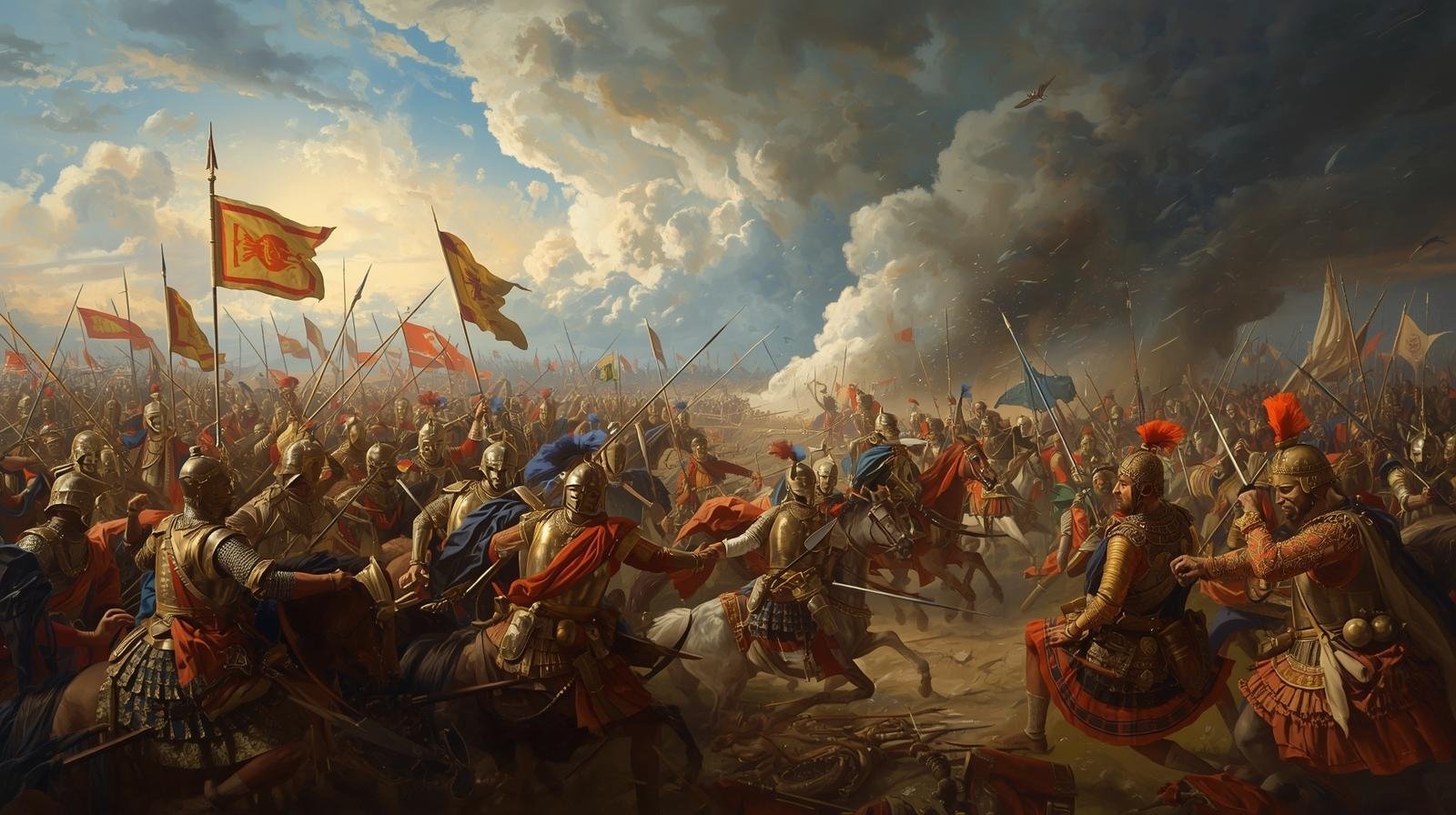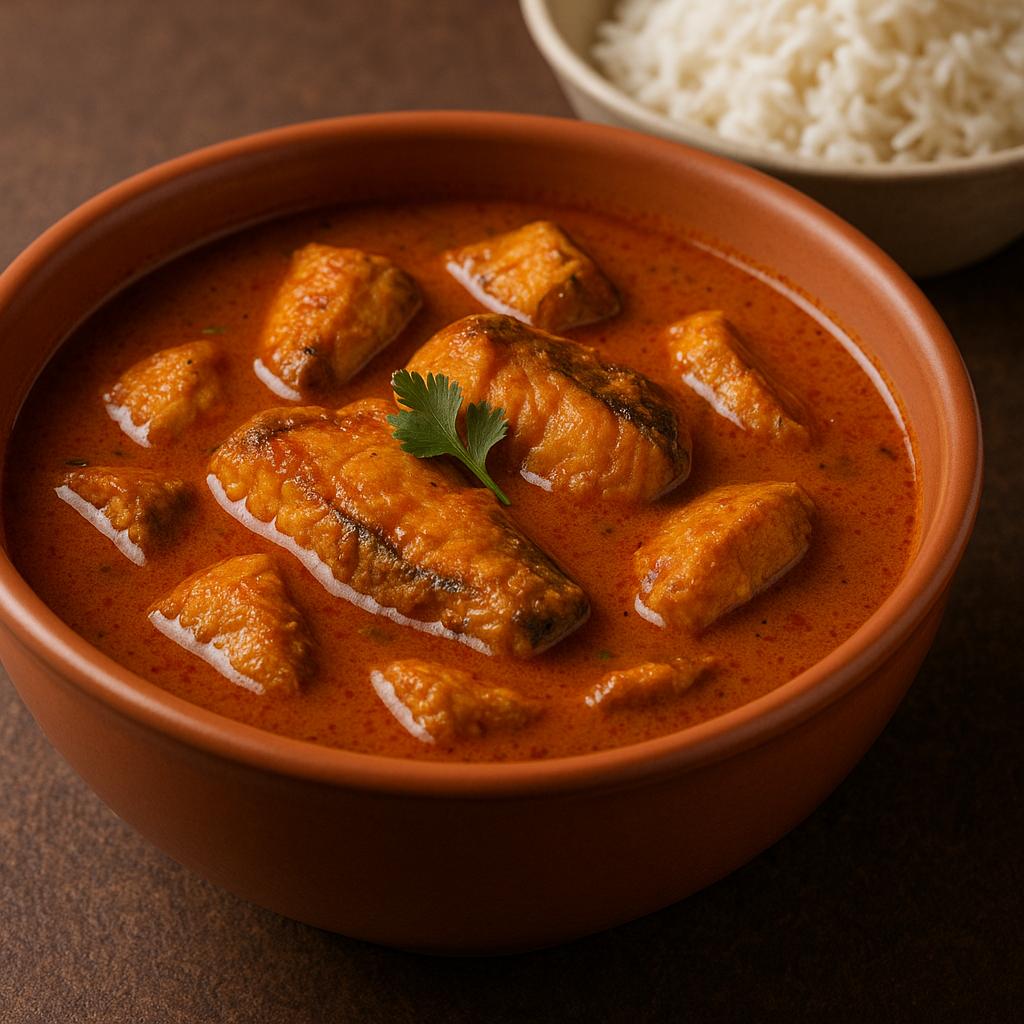The Battle of Panipat: History, Facts, and Its Impact on Indian Civilization
India’s history is filled with stories of valor, politics, and dynasties rising and falling. Among these historical turning points, the Battles of Panipat stand out as the most significant. These three monumental wars—fought in 1526, 1556, and 1761—changed the fate of the Indian subcontinent forever.
The small town of Panipat, located about 90 km from Delhi in Haryana, became the stage where empires clashed, rulers rose, and dynasties fell.
This article explores in detail the history, causes, key figures, strategies, outcomes, and long-term impact of all three battles of Panipat.
1. Introduction: Why Panipat Was So Important
Panipat’s strategic location made it a crucial battleground throughout Indian history. Situated on the plains of northern India, it provided open fields suitable for large-scale cavalry and infantry battles. Moreover, it was close to Delhi — the political center of power — making it the ideal spot for invaders and Indian rulers to confront each other.
Whoever won Panipat often went on to rule Delhi, and whoever ruled Delhi controlled India. This geographic and political significance turned Panipat into the “gateway of empire” — a place that witnessed bloodshed and glory for nearly three centuries.
2. The First Battle of Panipat (1526): The Dawn of the Mughal Empire
2.1 Background
The first Battle of Panipat took place on April 20, 1526, between Babur, the founder of the Mughal Empire, and Ibrahim Lodhi, the last ruler of the Delhi Sultanate. Babur had marched from Kabul into India with the ambition of expanding his empire, while Lodhi’s rule had already weakened due to internal dissent among Afghan nobles.
2.2 Forces and Strategies
- Babur’s Army: Around 12,000 soldiers equipped with modern firearms, including cannons (tufang) and matchlocks.
- Ibrahim Lodhi’s Army: Around 1,00,000 soldiers, including 1,000 war elephants and heavily armed cavalry.
Babur’s forces were numerically smaller but technologically superior. He used the Tulughma tactic, dividing his army into left, right, and center wings while keeping cavalry units for flanking attacks.
2.3 The Use of Gunpowder
This was the first major Indian battle that used artillery and gunpowder weapons. The thunderous noise of cannons frightened the elephants and caused chaos in Lodhi’s ranks, breaking their formation.
2.4 Outcome
Ibrahim Lodhi was killed in battle, and Babur emerged victorious. This marked the beginning of the Mughal Empire in India, which would go on to dominate the subcontinent for over 300 years.
2.5 Significance
- Ended the Delhi Sultanate era.
- Introduced modern warfare in India.
- Established Mughal dominance and changed the subcontinent’s political landscape.
3. The Second Battle of Panipat (1556): The Rise of Akbar
3.1 Background
After Babur’s death, his son Humayun ruled briefly before losing the throne to Sher Shah Suri. Later, Humayun regained it but died soon after, leaving a 13-year-old Akbar as heir. Meanwhile, Hemu, a brilliant Hindu general of the Sur dynasty, declared himself king and captured Delhi.
3.2 The Clash
The stage was set for another confrontation at Panipat.
- Akbar’s Army: Led by his regent Bairam Khan, numbering around 40,000 troops.
- Hemu’s Army: About 50,000 men, with a strong cavalry and hundreds of war elephants.
3.3 The Battle
The Second Battle of Panipat took place on November 5, 1556. Initially, Hemu’s forces were successful and seemed close to victory. But during the battle, an arrow struck Hemu in the eye, knocking him unconscious. Mistaking their leader’s fall as defeat, his army panicked and retreated.
3.4 Outcome
The Mughals claimed victory, and Akbar’s rule was firmly established. Hemu was captured and executed. This victory consolidated Mughal power in northern India for the next two centuries.
3.5 Significance
- Re-established the Mughal Empire after Humayun’s death.
- Confirmed Akbar’s position as emperor.
- Strengthened the Mughal hold over northern India and expanded their empire.
4. The Third Battle of Panipat (1761): The Fall of the Marathas
4.1 Background
By the mid-18th century, the Mughal Empire had weakened. The Marathas had become the dominant power in India and were expanding their influence northward. Meanwhile, Ahmad Shah Abdali (also known as Ahmad Shah Durrani), the Afghan ruler, invaded India to reassert control and plunder wealth.
Both powers wanted control over northern India, and Panipat once again became the battleground.
4.2 The Opposing Forces
- Marathas: Led by Sadashivrao Bhau, supported by Vishwasrao and Malhar Rao Holkar. Army strength: around 1,25,000 soldiers.
- Abdali’s Army: Comprising 1,00,000 men, including Afghan cavalry, Rohilla troops, and artillery support from Najib-ud-Daula.
4.3 The Battle
The Third Battle of Panipat was fought on January 14, 1761. It was one of the largest and bloodiest battles ever fought in Indian history. The Marathas initially held their ground but soon ran short of food and supplies. Abdali’s disciplined cavalry and better coordination turned the tide.
4.4 The Aftermath
The Marathas suffered catastrophic losses — around 70,000 soldiers killed and thousands taken prisoner. The entire Maratha leadership was nearly wiped out.
4.5 Significance
- Marked the end of Maratha expansion in North India.
- Left India politically fragmented.
- Weakened both sides, paving the way for British colonization.
5. The Common Thread: How Panipat Changed Indian History
Each battle of Panipat was a turning point that reshaped the power structure of India:
| Battle | Year | Main Rulers | Result | Impact |
|---|---|---|---|---|
| First | 1526 | Babur vs. Ibrahim Lodhi | Babur won | Start of Mughal Empire |
| Second | 1556 | Akbar vs. Hemu | Akbar won | Mughal rule consolidated |
| Third | 1761 | Marathas vs. Ahmad Shah Abdali | Abdali won | End of Maratha power, rise of British influence |
Panipat’s plains became the silent witness to changing eras — from the Afghans and Mughals to the Marathas and British.
6. Military Tactics and Innovations
The Battles of Panipat were not just about numbers; they reflected the evolution of military strategy in India.
- Babur’s use of field artillery and flanking tactics revolutionized Indian warfare.
- Akbar’s disciplined formations and strategic leadership under Bairam Khan showed the importance of leadership.
- The Third Battle highlighted logistics and supply chain failures, proving that even the strongest armies could fall without resources.
7. The Cultural and Political Aftermath
The repeated conflicts at Panipat deeply influenced Indian society:
- Religious and Cultural Change: The Mughal victory led to a long period of Indo-Persian cultural blending — in architecture, art, and language.
- Economic Impact: Wars drained regional treasuries but also led to the establishment of stable administrative systems under the Mughals.
- Rise of Colonial Power: The vacuum after the Third Battle allowed the British East India Company to gradually take control of India.
8. Interesting Facts About the Battles of Panipat
- The First Battle of Panipat was one of the earliest in the world to use gunpowder weapons effectively.
- Babur built defensive trenches and carts tied with oxen to protect his artillery — an innovation unseen before in Indian warfare.
- In the Second Battle, Akbar was only 13 years old.
- The Third Battle lasted more than eight hours, causing over 100,000 deaths, making it one of the bloodiest in the 18th century.
- After the Third Battle, the city of Panipat took decades to recover due to mass destruction and famine.
9. The Legacy of Panipat
Even today, Panipat holds an important place in Indian history. It reminds us of the cost of ambition, the value of strategy, and the fragility of power.
Archaeological remains, war memorials, and ancient battlegrounds in Panipat continue to attract historians, researchers, and tourists from across the world.
The phrase “The Road to Delhi passes through Panipat” still resonates as a reminder of its unmatched historical importance.
10. Conclusion: Panipat – The Turning Point of Indian Civilization
The Battles of Panipat were not mere military encounters — they were defining moments that redrew the political, cultural, and economic map of India.
- The First Battle brought the Mughals.
- The Second Battle consolidated their empire.
- The Third Battle ended indigenous dominance and opened the door to British colonial rule.
From Babur’s cannons to Abdali’s cavalry, each confrontation reflected the changing nature of warfare and politics in India. Panipat stands as a symbol of destiny, reminding us that history is shaped by courage, strategy, and timing.
🏰 Battles of Panipat – 50 Important Questions and Answers
🔹 First Battle of Panipat (1526)
- Q: When was the First Battle of Panipat fought?
A: 20 April 1526 - Q: Who fought the First Battle of Panipat?
A: Babur and Ibrahim Lodhi - Q: Who won the First Battle of Panipat?
A: Babur - Q: What was the result of the First Battle of Panipat?
A: Establishment of the Mughal Empire in India - Q: Who was the last ruler of the Lodhi dynasty?
A: Ibrahim Lodhi - Q: Which new weapon did Babur introduce in Indian warfare?
A: Gunpowder and cannons - Q: Where is Panipat located?
A: In the present-day state of Haryana, about 90 km from Delhi - Q: What tactics did Babur use in the First Battle of Panipat?
A: Tulughma and Araba (wagon formation) tactics - Q: Which foreign power did Babur belong to?
A: He was from Fergana (Central Asia) and ruled Kabul before invading India. - Q: What was the strength of Babur’s army in the First Battle of Panipat?
A: Around 12,000 soldiers
🔹 Second Battle of Panipat (1556)
- Q: When was the Second Battle of Panipat fought?
A: 5 November 1556 - Q: Who fought the Second Battle of Panipat?
A: Akbar’s forces (led by Bairam Khan) and Hemu - Q: Who was the ruler of the Mughal Empire during the Second Battle of Panipat?
A: Akbar - Q: Who represented Akbar in the Second Battle of Panipat?
A: Bairam Khan - Q: Who was Hemu?
A: A Hindu general and Prime Minister of Adil Shah Suri, later self-declared king of Delhi - Q: What title did Hemu assume after capturing Delhi?
A: Raja Vikramaditya - Q: What happened to Hemu during the Second Battle of Panipat?
A: He was struck by an arrow in the eye and later captured and executed. - Q: Who won the Second Battle of Panipat?
A: Akbar (Mughal forces) - Q: What was the importance of the Second Battle of Panipat?
A: It re-established Mughal power in India after Humayun’s death. - Q: How old was Akbar at the time of the Second Battle of Panipat?
A: Around 13 years old
🔹 Third Battle of Panipat (1761)
- Q: When was the Third Battle of Panipat fought?
A: 14 January 1761 - Q: Who fought the Third Battle of Panipat?
A: Marathas and Ahmad Shah Abdali (Durrani) - Q: Who was the leader of the Marathas in the Third Battle of Panipat?
A: Sadashivrao Bhau - Q: Who was Ahmad Shah Abdali?
A: The ruler of Afghanistan and founder of the Durrani Empire - Q: What was the main cause of the Third Battle of Panipat?
A: The struggle for control over northern India - Q: Who was the Peshwa of the Marathas at that time?
A: Balaji Baji Rao (Nana Saheb) - Q: Which Maratha leader was killed in the Third Battle of Panipat?
A: Vishwasrao, the son of Peshwa Balaji Baji Rao - Q: What was the result of the Third Battle of Panipat?
A: The Marathas were decisively defeated by Ahmad Shah Abdali - Q: Approximately how many soldiers died in the Third Battle of Panipat?
A: Around 70,000 to 100,000 - Q: What was the significance of the Third Battle of Panipat?
A: It marked the end of Maratha dominance in North India and created a power vacuum later filled by the British.
🔹 General Questions about the Battles of Panipat
- Q: How many Battles of Panipat were fought in total?
A: Three - Q: Why was Panipat chosen as a battleground repeatedly?
A: Due to its flat terrain, open battlefield, and proximity to Delhi - Q: Which dynasty ended after the First Battle of Panipat?
A: The Lodhi dynasty - Q: Which dynasty began after the First Battle of Panipat?
A: The Mughal dynasty - Q: What was the common feature in all three Battles of Panipat?
A: Each battle changed the political power of North India. - Q: Which battle marked the end of medieval Indian warfare?
A: The Third Battle of Panipat - Q: What was Babur’s autobiography called?
A: Tuzuk-i-Baburi or Baburnama - Q: Who was Akbar’s guardian and mentor during his early reign?
A: Bairam Khan - Q: Which battle introduced gunpowder weapons in India?
A: The First Battle of Panipat - Q: After which battle did the British gradually establish control over India?
A: After the Third Battle of Panipat
🔹 Historical and Analytical Questions
- Q: What was the political significance of the First Battle of Panipat?
A: It established the foundation of the Mughal Empire in India. - Q: What was the social impact of the Third Battle of Panipat?
A: It caused massive loss of life and weakened Indian powers, paving the way for British dominance. - Q: Who was known as the “Hero of Panipat” among the Marathas?
A: Sadashivrao Bhau - Q: Which Mughal ruler re-established control over Delhi after the Second Battle of Panipat?
A: Akbar - Q: What was the consequence of Babur’s victory in 1526?
A: The beginning of Mughal rule that lasted for nearly three centuries. - Q: Which European power benefited indirectly from the Third Battle of Panipat?
A: The British East India Company - Q: What was the main weakness of the Maratha army in the Third Battle of Panipat?
A: Poor supply lines and lack of coordination with local rulers. - Q: Who was the Afghan ally of Ahmad Shah Abdali in India?
A: Najib-ud-Daula (Rohilla chief) - Q: Which battle is considered one of the bloodiest in Indian history?
A: The Third Battle of Panipat (1761) - Q: What is the overall historical importance of the Battles of Panipat?
A: They shaped the course of Indian political history by determining the rise and fall of major powers — the Mughals, the Marathas, and eventually the British.






Leave a Reply